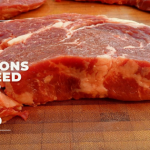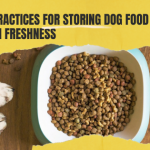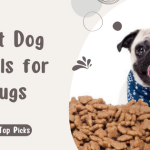Are you concerned about the food your dog is eating? Confused about all the conflicting information available? Not sure if you are feeding the right food for your dog? Then join the club, as I was exactly in the same position when I first became interested in the science of dog nutrition.
Unfortunately, I was quickly disillusioned with the vast amount of conflicting information available. “Old Wives Tales”, myths, and pet food industry marketing left me as much in dark about dog nutrition as when I first started my research!
Perhaps the best place to start is to do a little myth-busting as believe me, there are plenty of mad ideas floating around out there! In the shop, I hear most of these almost every day, and while I encourage customers to ask questions, I would much rather prefer if some of these were forever banished to Room 101!
Myth Number one: The type of dog bowl does not matter
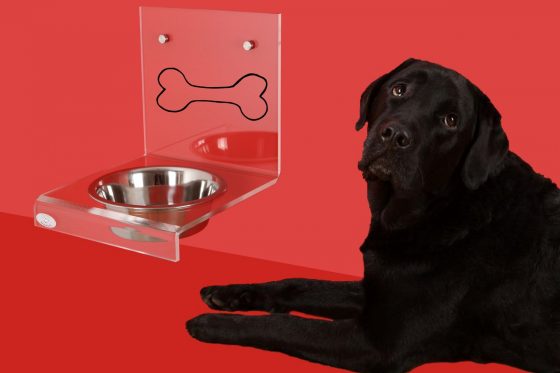
This all too common myth is unfortunate as different dogs require different bowls or feeders depending on their size, age, height, and health status. While many dogs do just fine with a standard tin dog dish, not all do.
The obvious one is bowl size, puppies and small dogs only need small bowls while large dogs need large dog bowls. But it gets quite a bit more elaborate than that. Fast eaters need bowls which are made with grooves making it harder to get the kibbles, thus requiring your dog to slow down while eating. Tall dogs require either elevated dog bowls or wall mounted dog bowls otherwise the constant hunching over to eat can cause health issues later in life. If you have a slobberer then you might want to invest in an antibacterial dog diner. And if you want your dog bowls to last and look nice sitting in your kitchen you might want to spend a little more and splurge on some luxury or modern dog bowls as found here.
Myth Number two: I’ve always fed my dogs on Cheap Brand X and they did just fine.
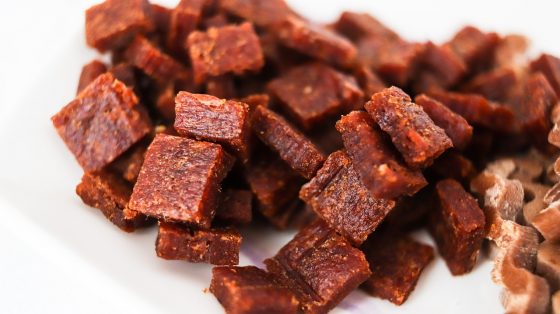
I think that the words to focus on here are “just fine” – and I challenge proponents of this myth to take a good hard look at their dog’s condition and then compare him or her to a dog feed on a premium product. Could his coat be shiner? Could his eyes be a bit brighter? Could he do with losing a bit of doggy pong? Still not convinced?
Try a premium brand of food for 6-8 weeks and then take another look. The results often speak for themselves, and most people never go back to having a dog that’s “just fine” ever again. These are some of the best dog food brands for large dog breeds.
Myth Number Three: Table scraps are dangerous for dogs

The term table scraps is a bit misleading so let’s distinguish between “junk food” and healthy additions to your dog’s diet. Foods high in fat, salt, sugar or other nasties (such as the grisly bits leftover from the Sunday roast) are what I consider to be junk food and should be avoided. The frequency of giving additional foods should also be carefully monitored, as no matter how tiny the addition may seem, overfeeding any food can lead to problems.
However, there is no denying that Dogs can benefit from having a variety in their diet. The addition of good quality human foods, such as a piece of carrot or a bit of chicken breast meat every once in a while is not going to do them any harm, and these often make the very best training treats around!
What really does get my goat is people who claim that feeding dogs “human food” will make them raid bins, beg at the table, or refuse to eat their own dinner. These behaviors are not caused by the addition of the food itself, but by the way it is offered. Obviously, if you feed your dog from the table, it will learn to beg. If you allow your dog to raid the bins it will continue to do so regardless if it is fed additional human food or not. My overall favorite though has to be that giving a dog fresh meat will make it “go wild” and attack anyone who tries to go near its food bowl. Again, a behavior that comes back to training.
Myth Number Four: The best diet for your dog is home-prepared “natural” food

Thanks to the popularity of the internet, as well as coverage in popular magazines, dog food myths like this one are steadily gaining in popularity. Unfortunately, it’s also the one that causes me the most concern as I firmly believe that the majority of dog owners do not understand how to create a sound natural feeding plan.
Entire schools of thought have been built around which of the various natural feeding methods is best. Some groups claim that raw food provides optimum nutrition, while others counter that cooked food (with or without bones) is the much better option. I won’t get into the specific arguments here, but suffice to say, each camp is quite passionate about their method of feeding – often to the determent of the average dog owner who is simply looking for the facts.
The bottom line is that a dog can only be healthy if its diet supplies all the nutrients it requires on a daily basis. If any are missing, or consumed in the wrong combination, over time the dog will start showing signs of malnutrition which could eventually lead to the development of a serious illness.
With natural feeding, the owner is responsible to ensure that the food being prepared meets the dog’s daily requirements and this is fine, so long as he or she understands that natural feeding is not as simple as providing endless dinners based on chicken and rice. Once you take the decision to feed a natural diet you are now completely responsible for your dog’s nutritional health and it is up to you to do your research and carefully plan out each meal.
On a personal note, I’m not opposed to natural feeding methods and have assisted customers with creating meal plans that suit both their lifestyle and their dog’s specific requirements. I am, however, a big believer that the key to a healthy dog is not either natural or commercial food, but a diet that meets the individual requirements of the dog.
Myth Number Five: The breeder knows best

Busting this myth may get me into trouble, so let me first explain that in my opinion there are breeders and then there are responsible breeders and quite often the two are miles apart when it comes to the nutrition of their puppies.
Responsible breeders do their best to stay up to date on the latest feeding and nutrition advice, but also make allowances that for most owners getting used to a new puppy is a hard enough task on its own and does not need to be over-complicated by prescribing long convoluted meal plans.
Although it is advisable that you stick with whatever food the puppy has been on for at least the first two weeks that it arrives, do not feel that you have to stick with the breeder’s food forever. So long as you chose a top quality product, responsible breeders will not have a problem with you changing, and in fact, the very best breeders will often make suggestions regarding other brands that they themselves have used or approve.
The science of canine nutrition is quite complicated and has given rise to countless myths about dogs and their food. I hope that I’ve cleared up a few of the more popular misconceptions, but if you want to learn more about this fascinating subject, here are a few resources that I would highly recommend.
The Feeding Stuffs Regulations 1991. Statutory Instrument No. 2840: This is the law as it pertains to the labelling of all commercial pet foods produced in the UK. It makes for interesting reading, as it contains the official definitions of what common ingredients actually may include.
The Waltham Book of Clinical Nutrition of the Dog and Cat: Ed. By J.M Wills and K.W. Simpson. Controversial, but still considered the starting point in any serious study of dog nutrition. Although some of the papers are a bit specialist, it is always worth a read and is readily available from most online book shops.
Dog Health and Nutrition for Dummies: By M. Christine Zink, DVM, PhD. An excellent book to help you on your way to understanding the complex nature of dog nutrition.
Raw Meat Diets for Cats and Dogs? An Assessment of the Research and Arguments Related to the Advisability of Feeding Raw Meat-Based Diets to Cats and Dogs: By James O’Heare, Ph.D. To my knowledge this is the only book to take a serious, objective view of the pros and cons of a natural feeding program for dogs. Essential reading if you are considering switching to a natural diet and are looking for an unbiased opinion on the subject.
*Note: There are some foods that are highly toxic to dogs and should never be offered. These include: chocolate/sweets, alcohol, coffee grounds, cocoa, and potato leaves/peels/stems. For a full list of foods that could potentially harm your dog, please consult your veterinarian.
What’s more, if you are looking for raw dog food in Canada, there are plenty of online resources to help you decide whether this is the right option for your dog.
You can also find really good information on nutrition on DogStruggles with a lot of detailed dog food reviews and recommendations.

